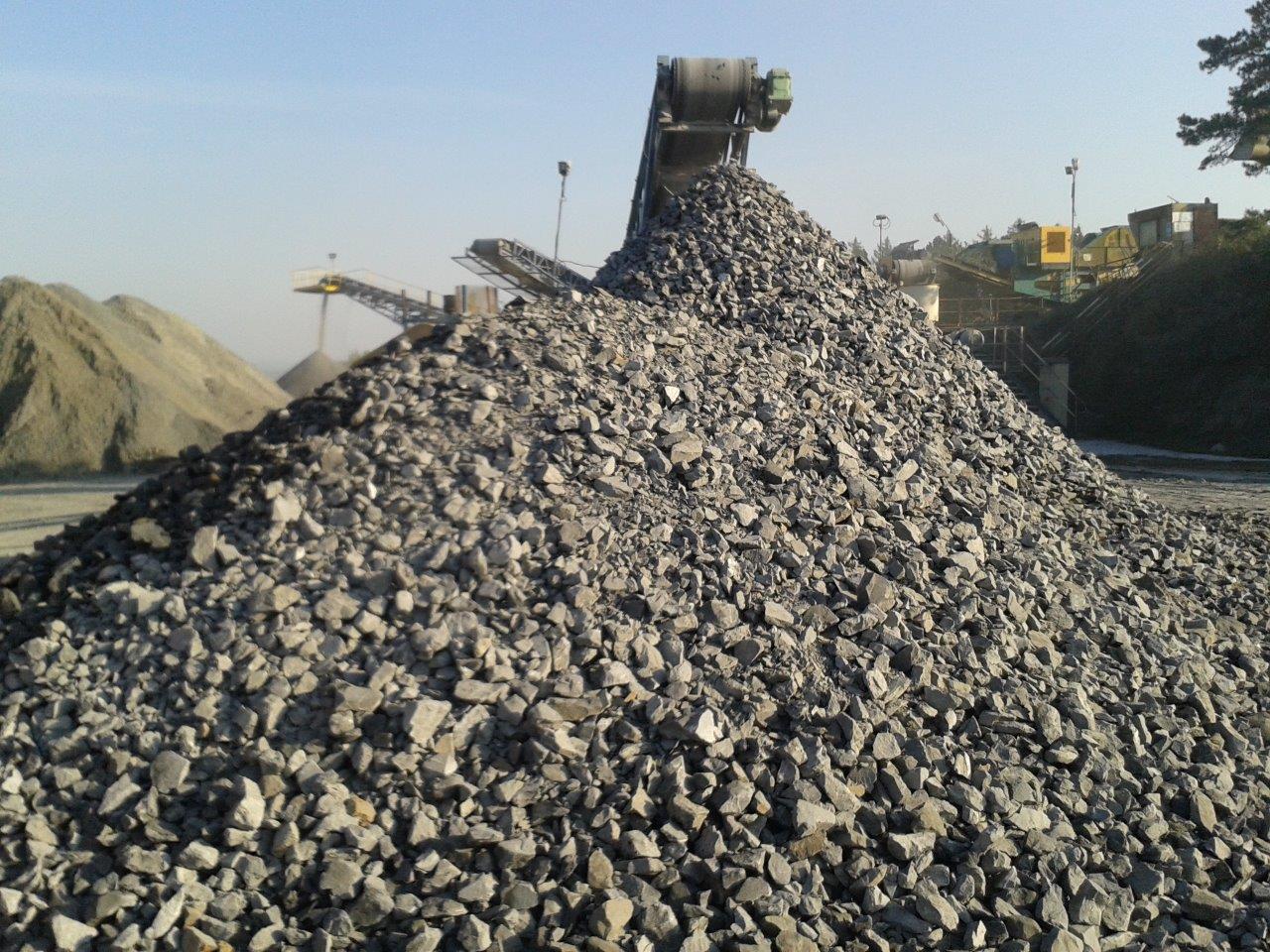Basalt
Crushed stone or angular rock is broken stone, both natural and rubble. Because the rock (usually from a quarry) is crushed, it does not have a round surface. This ensures the chippings do not slip away easily. Because of this there is more mutual cohesion.
Crushed stone is used to produce asphalt as it ensures the roughness of the roadway. After all, tires have more grip on
rough stone than on the smooth tar between the stones. As a result of frequent use of the asphalt, the connecting tar wears out between the crushed stones. In rail construction, the thick top layer is made of crushed stone and holds the railway sleepers with the rails on top.
The layer of crushed stone is vibrated by machines to optimize coherence and ensures that the track doesn’t move. Fine crushed stone is often also called split or porphyry (used for the walkway next to rail tracks). Cyclists often criticize its use on cycle paths since it results in a higher rolling resistance and flat tires.
Basalt split stone
An indestructible and colourfast type of stone that is created through the solidification of lava or magma in volcanic
areas. Basalt split is one of the hardest type of rock and is therefore very suitable for heavily loaded surfaces such as motorway driveways, parking spaces and railways.
Basalt is most commonly used in waterworks because of its high volumic mass (2,700-3,300 kg/m3), compressive strength, weather resistance and also because of its columnar form in the form of scrap basalt as a rock for breakers, piers and as a ballast for zinc pieces. Basalt rock is used as a ballast bed on railways and as a split in road construction. Basalt has a compressive strength of approx. 110-ca. 350 N/mm2 (1,100-3,500 kgf/cm2), sometimes even around 500 N/mm2 (5,000 kgf/cm2).
Appliances and benefits
It is noteworthy that, despite the required regular maintenance, the traditional railway superstructure with ballast bed, even with high-speed lines (TGV), has so far still managed to maintain its dominant position due to its favourable properties:
-
Good sound and vibration damping;
-
Good drainage of rain and melt water;
-
Simple correction of the track’s orientation;
-
Replacement of parts relatively easy;
